Solar
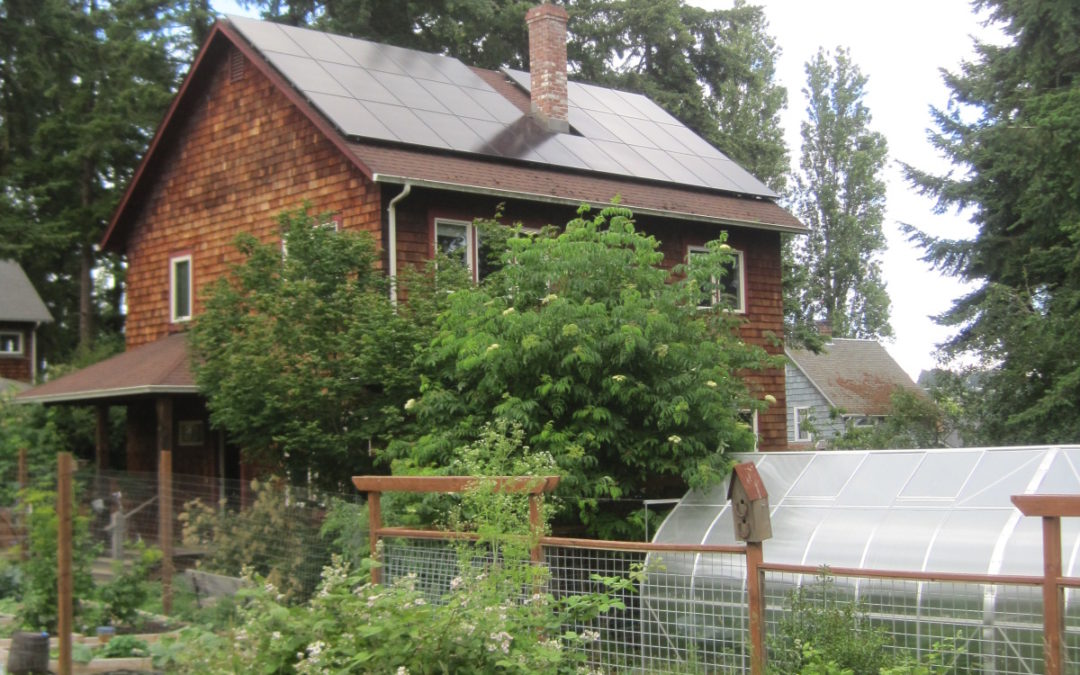
This week marked a change in direction of our federal government’s energy policy. While previous administrations have supported renewable energy goals and honored our commitments to the international community regarding climate goals, the incoming administration will be working to reverse those efforts.
The new president stated that he was taking action to withdraw from the Paris Agreement on Climate (again) stating “I will also declare a national energy emergency. We will drill, baby, drill. America will be a manufacturing nation once again, and we have something that no other manufacturing nation will ever have: the largest amount of oil and gas of any country on Earth. And we are going to use it. We will bring prices down, fill our strategic reserves up again, right to the top, and export American energy all over the world. We will be a rich nation again. And it is that liquid gold under our feet that will help to do it.”
For our part we do not agree with this proposed national energy policy. We do not agree that this is a reasonable path to wealth for anyone other than oil companies and gas utilities, nor is it sustainable for the environment.
We have spent over two decades installing solar in order to make the cleanest electricity possible at the point of use, to the benefit of our clients that own the solar arrays on their roofs. Over 1200 of our clients have installed rooftop solar arrays on the Olympic and Kitsap Peninsulas, and electric vehicle charging equipment, and have electrified where they can in order to save money and replace the burning of polluting fossil fuels.
If your goals for a personal energy policy involve making clean energy and saving money on your bills, please email or call to learn more about how solar could work at your home.
by Andy Cochrane | Jan 24, 2025
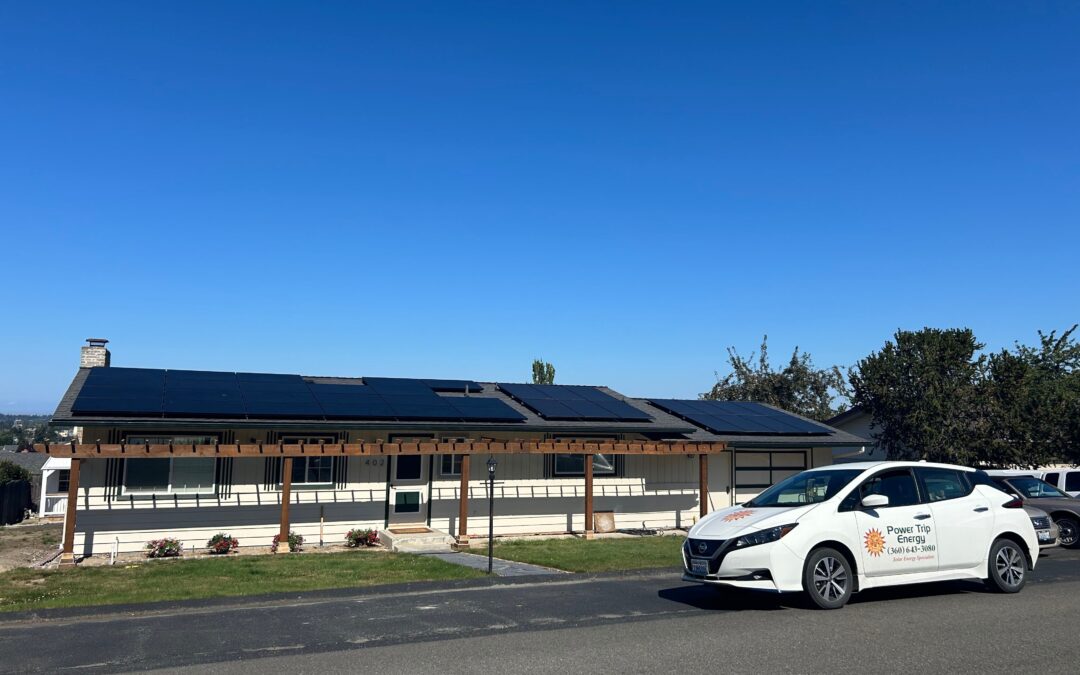
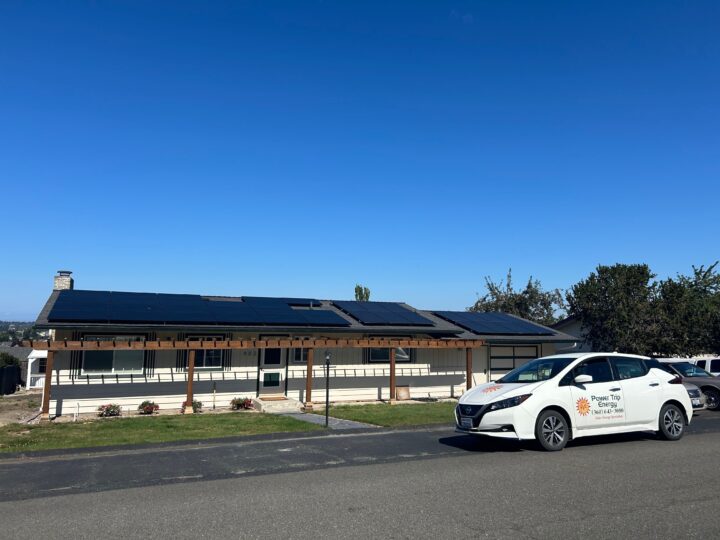
Phase II Solar Expansion in Sequim
We are always happy to help our customers expand their existing arrays as their energy consumption changes. With Phase II now operational, this system will produce enough power to fully offset their electrical needs; contributing to a greener and more energy-independent future for this Sequim resident.
by Andy Cochrane | Oct 10, 2024
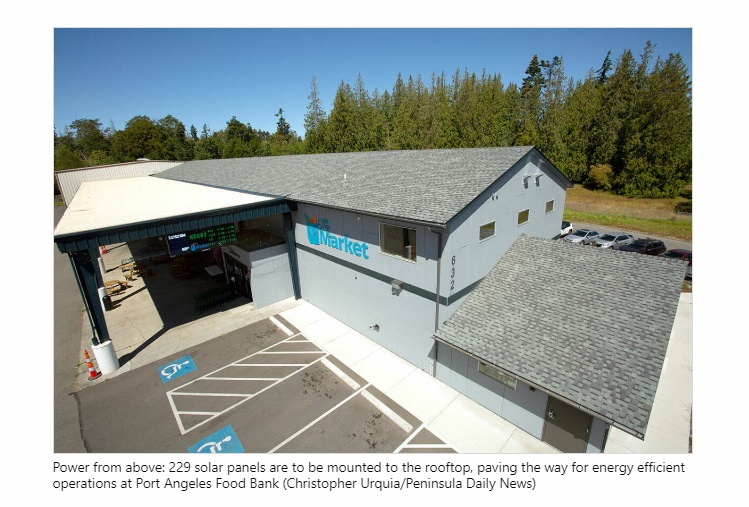
Port Angeles Food Bank to go solar with state grant
(more…)
by Andy Cochrane | Jul 29, 2024
Thank you for allowing our team to install this beautiful SunPower solar array on your home recently, Dan and Evelyn!
Listen in as Dan shares with Andy how much their solar panels produce on rainy/cloudy days in the Pacific Northwest.
by Andy Cochrane | Jul 8, 2024
“Power Trip Energy was amazing to work with. They provided multiple options based upon several usage scenarios. They patiently answered questions. They took care of all of the permits and approvals required. The installation crew was capable, quiet, and clean – we hardly knew they were here.
They came out same day within a couple of hours of the utility installing the net-metering meter. Excellent communications and clarity.
Thank you again for your patience and flexibility with our situation. We broke-even on production/usage yesterday, and that was only with about five peak production hours and partly cloudy conditions. We can’t wait to see how it does during the peak production months! Please don’t hesitate to reach-out if we can help support your on-going efforts in the community.” Jonathan & Nancy
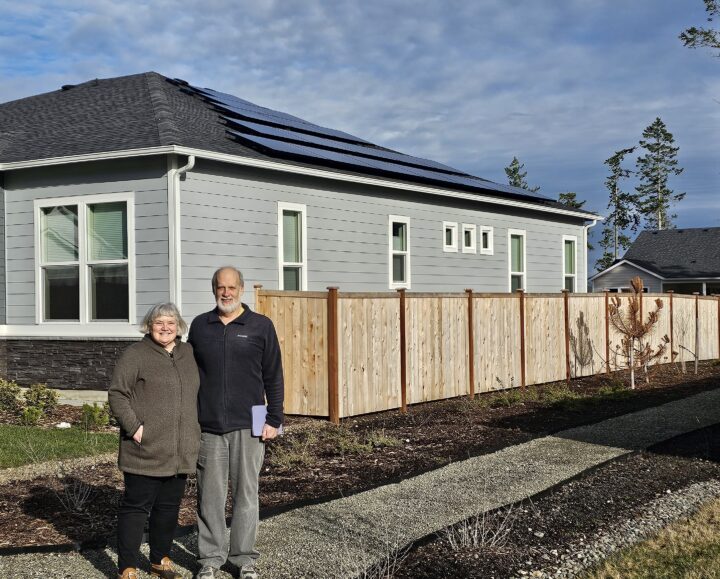
by Andy Cochrane | Mar 29, 2024
I recently read about two towns in California that have mandated the installation of grid-tied PV systems on newly constructed homes. This government legislation illustrates to me how far residential solar power has come. Just a couple of decades ago, solar power brought to mind one solar panel powering a flickering light bulb hanging from the ceiling of a wood cabin. And now City Councils are insisting upon solar! The passing of these laws leaves me wondering if legally mandating solar installations is a growing trend and what will this mean for the future?
The town of Sebastopol has about the same population as Port Townsend, Washington, around 8000 souls. In 2013, this quirky and decidedly liberal town passed a law requiring solar panels on all new buildings and additions with nearly unanimous support from its City Council. According to a May 10, 2013 article by Miranda Green of The Daily Beast, “Sebastopol’s ordinance orders that the solar systems must provide 2 watts of power per square foot or offset 75 percent of the structure’s electricity use.” So a humble 3.6 KW system would be required on an 1800 sq ft home.
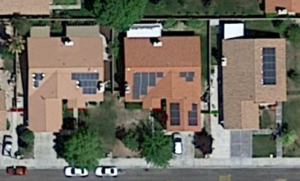
Lancaster, California was the first city in the United States to mandate solar panels on new construction. Photo: Map data ©2016 Google
Unlike Sebastopol, Lancaster, California is largely politically conservative. It has a population of around 150,000, about the same as the Washington State counties of Clallam, Jefferson, and Mason combined. According to Green, Lancaster was the first city in the United States to mandate solar panels on new construction. The city council was unanimous in approving a zoning code amendment requiring housing developers to add solar power systems on all new homes. This new code was initiated by the Republican mayor, R. Rex Parris, who wanted to make Lancaster the “solar capital of the universe.” The satellite photo of Lancaster above shows a segment of a housing development impacted by the legislation.
A Marketplace.org article posted on August 11, 2016, by Jed Kim addresses the question of mandating solar power. According to Kim, “Santa Monica recently approved an ordinance making rooftop solar systems mandatory for all new construction and major renovations.” San Francisco is planning on implementing similar legislation in 2017. Dean Kubani, Santa Monica’s chief sustainability officer, explained that the ordinance was approved to aid the city’s efforts to reduce emissions, “We, like a lot of other cities, are looking at greenhouse gas impacts and carbon impacts, and we’re trying to figure out how can we become carbon neutral.”
In the greentechmedia.com article, What It Really Means to Require Solar Panels on All New Buildings (June 20, 2016), Julian Spector writes, “Other municipalities have already reached out to San Francisco for more information about the policy, including Boston, Washington, D.C., Cambridge and Palo Alto.” Spector concludes, “The endgame will be cities where rooftop solar isn’t a personal challenge for a homeowner, it’s just one of many components expected of a market-ready property.”
It seems clear that mandating solar power is indeed a growing trend. However, I am hesitant to assert that solar power should be mandated for all new construction across the country. All too frequently, legislation that is meant to help people ends up presenting unintended consequences and sometimes does more harm than good. What are the possible unintended consequences of legislating solar installations? How successful are other incentive programs and commercial promotions in encouraging people to adopt solar power? If we wait for the market to come around to solar, will it happen fast enough to mitigate our climate crisis? What do you think? What questions do you have about this topic or other issues with solar power?
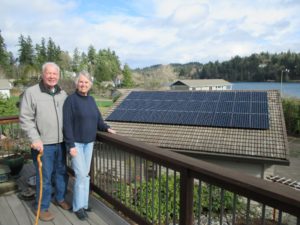
Proud new owners of a Power Trip Energy solar array, 2016
by Andy Cochrane | Sep 13, 2016
“Net Metering” describes the relationship between a utility and its customer when the customer has rooftop solar that is sometimes feeding the grid in addition to supporting their own loads, and the customer is compensated at the same rate as they are charged per kwh consumed or provided. In Washington, we have a net metering law requiring utilities to accept net metering systems up to a total capacity of 0.5% of the 1996 peak load. For more info read here https://powertripenergy.com/solar-faq/
Many utilities are now reaching that level, and due to the PR efforts of national electric industry interests, some local utilities are using language they have heard which threatens solar here in Washington. Increasing the legislative caps on net metering is crucially important to allowing private individuals the freedom to invest their own funds in upgrading their house with solar, and being compensated at a fair rate for the clean electricity they provide to the utility. Unfortunately the legislature has had a difficult time addressing this issue, even though the present cap of 0.5% of a peak load from 20 years ago is miniscule.
Here is how three other states are faring, based on recent news:
Hawaii’s Utility commission has voted to end net metering after seeing solar on as many as 16% of the homes on Oahu. This is poor policy, and will probably lead to grid-defection among some people who can afford batteries and who have large parcels (Hawaii law requires utility electrical service on standard small residential lots.) http://www.greentechmedia.com/articles/read/hawaii-regulators-shutdown-hecos-net-metering-program
New York regulators have suspended the caps on net metering in an effort not to interrupt installations as reaching the current 6% of load cap is imminent. http://www.utilitydive.com/news/ny-regulators-lift-solar-net-metering-caps-until-rev-docket-sets-der-values/407667/
In Vermont, the net metering cap was raised from 4% to 15% two years ago, a cap that has now been reached. Regulators are considering removing the cap. http://www.washingtontimes.com/news/2015/oct/24/vermont-reaching-net-metering-cap-with-solar-expan/
Based on the level of solar other states are working to achieve, if you hear anyone talking about solar causing problems in Washington at 0.5% capacity, your response should be skepticism.
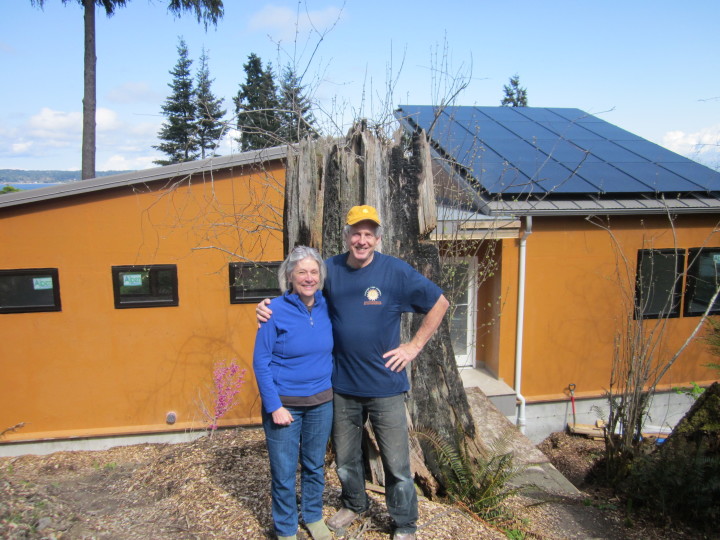
by Andy Cochrane | Oct 26, 2015
I recently came across this interesting info-graphic. It is a couple of years old now and does not apply to Washington State. It mentions how different states look at determining a reasonable amount of power generation that can come from net metered solar, and uses examples of 15%, 25% (Hawaii), or 50% (California) and different thresholds to use as a basis for those percentages.
Here in Washington State, utilities are only required to allow 0.5% of the 1996 peak load – such a low threshold it is ridiculously limiting. Thankfully the utilities in which we have surpassed this threshold have seen no problems with allowing additional net metering systems. In the coming months we will be working closely with our legislators to address this archaic and potentially stifling limitation before it negatively affects our clients and our community.
Enjoy this explanatory graphic:
http://ilsr.org/archiac-utility-rules-stall-local-solar-infographic/
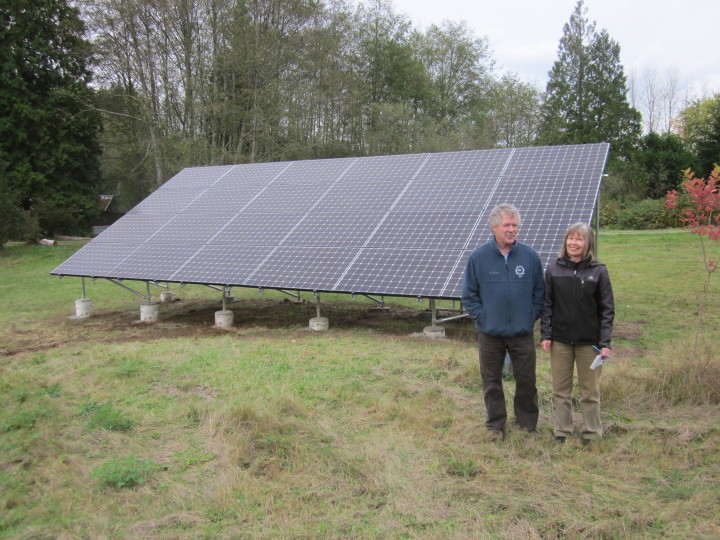
Another beautiful ground mounted array for beautiful people in Poulsbo, October 2014.
by Andy Cochrane | Oct 30, 2014
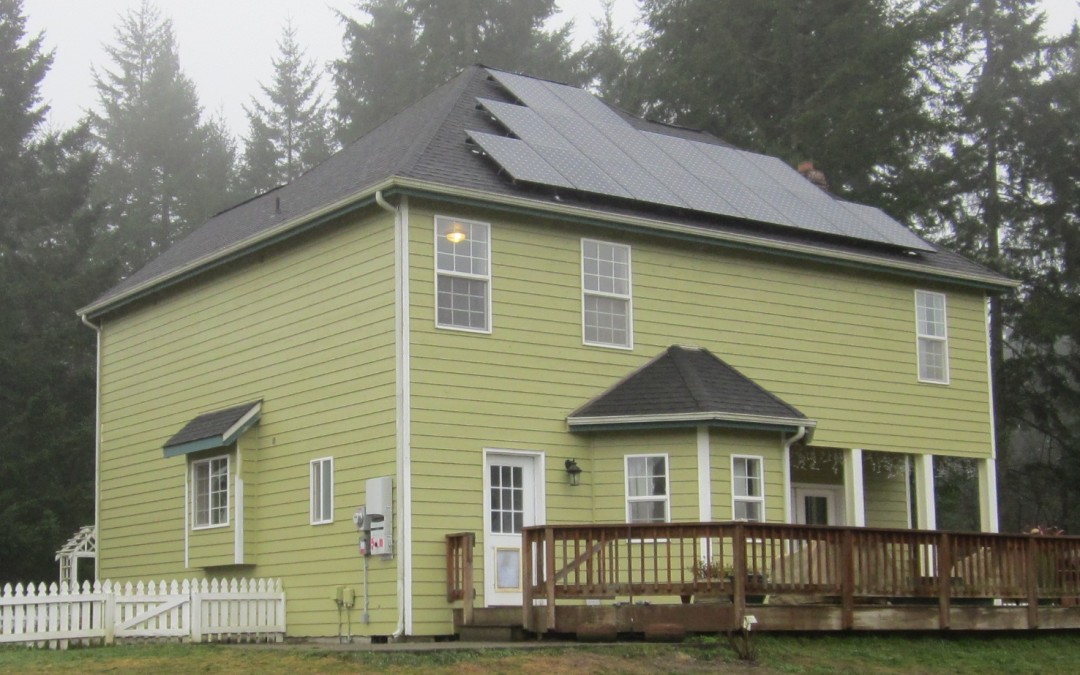
In a recent international survey conducted among PV system installers, integrators, EPC providers and PV module distributors, there were two interesting findings that align with our business practices here at Power Trip Energy.
Firstly, 99% of these respondents said that module reliability was a more important purchasing factor than price. We have made this determination long ago. As a small installer with a single crew and over 400 systems installed in the last 11 years, we are happy to have made the decision to work with high quality equipment, and not necessarily chase the lowest cost per watt. As a result of our choice, our single crew is always scheduled to be installing a new system, and is very rarely called off in order to be dispatched on a service call.
Secondly, SunPower has come on top again as being rated #1 in highest quality. Admittedly, this is a survey and so represents opinion and is not a technical study, however we have previously referenced technical studies that reached the same conclusion. We are proud to be Authorized SunPower dealers, and we are confident that this strategic partnership will serve us and our customers well over the coming decades.
Read more on this particular survey: http://www.pv-magazine.com/news/details/beitrag/module-reliability-more-important-than-cost–say-solar-customers_100014622/#ixzz2xHFHb64N
We are currently installing SunPower 335 and 327 watt modules, as in this recent wintry installation at Heather and Tony’s home in Port Orchard pictured below.
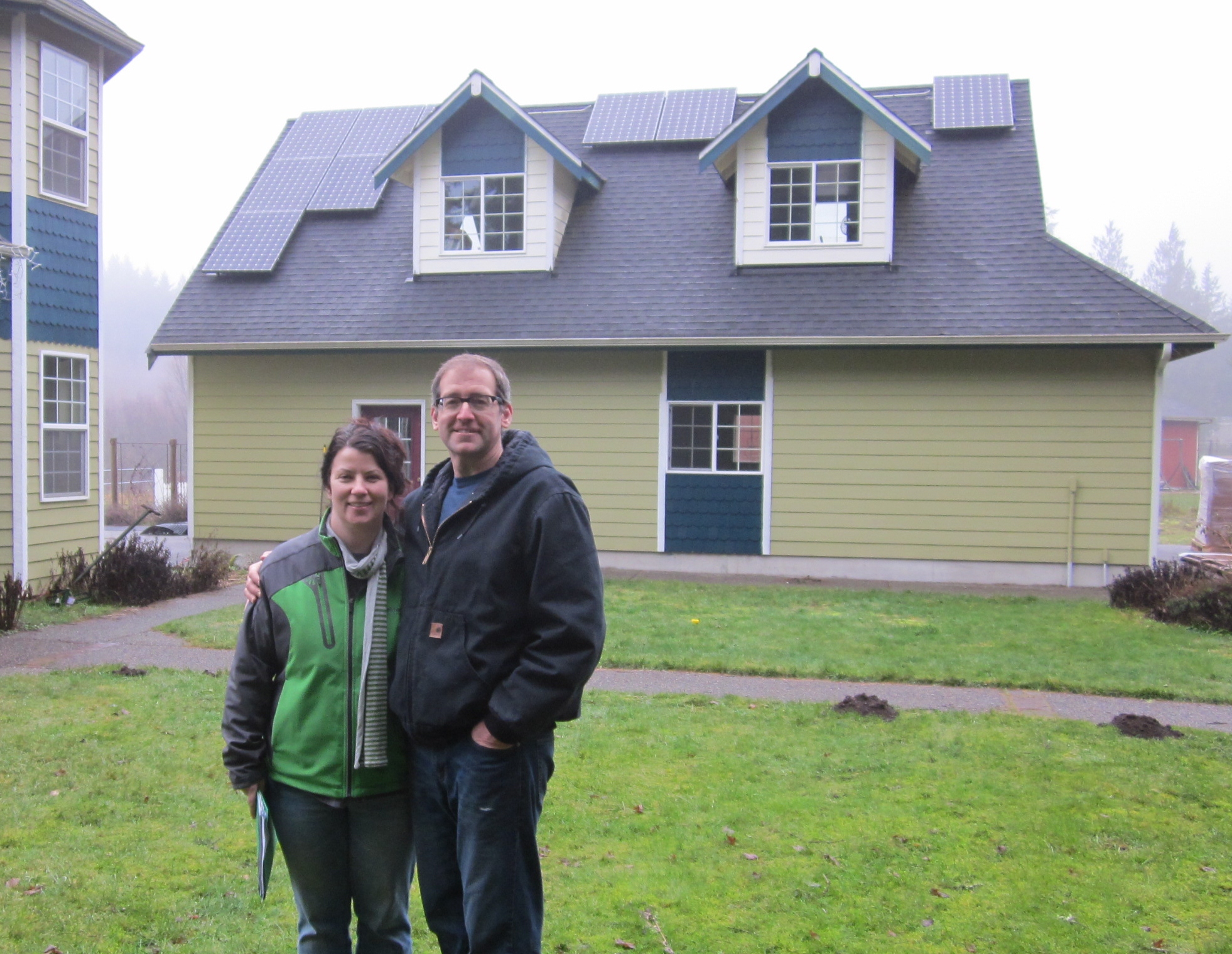
by Andy Cochrane | Mar 28, 2014

Our friends at Wild Birds Unlimited are featured in an article about solar, the PV / EV connection, and increasing attractiveness for solar among small businesses in Washington.
Solar for Home and Business – Leader Home and Garden 2014
by Andy Cochrane | Feb 28, 2014











